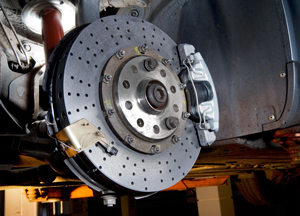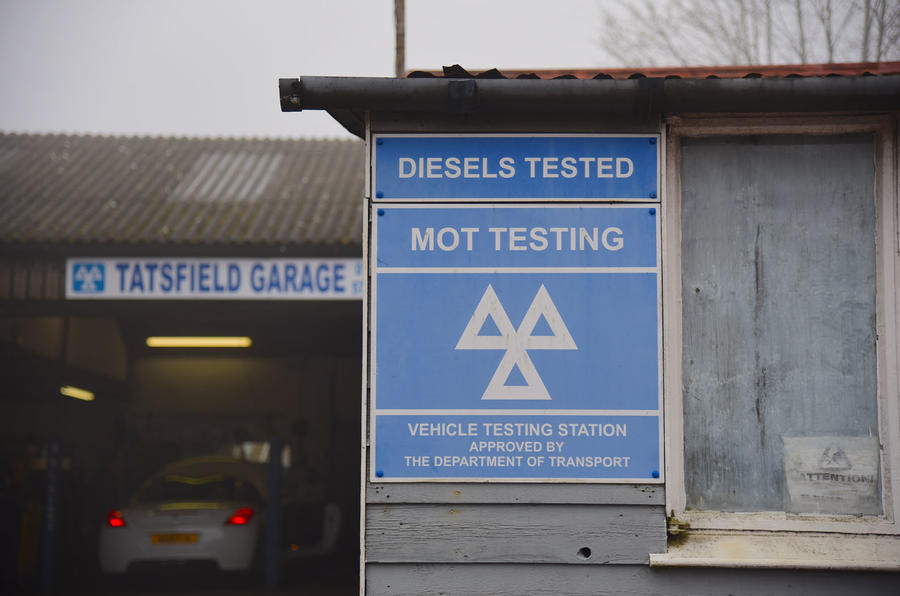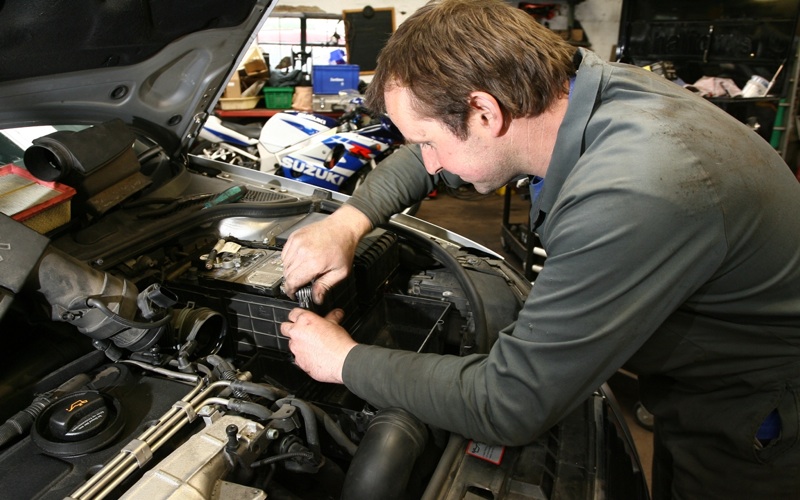Stop what you were doing and think about brakes. How many brands can you come up with? Apart from the OE brands, think of the second tier suppliers and re-boxers that have a braking programme as well as the factors and online vendors that have house or price-fighting brands. Think of the number of products offered as ‘upgrades’ to the original equipment, plus imported brands trying to get a toe-hold in the UK aftermarket… and once you’ve counted them all, can you really say that the market is not over supplied?
TMD Friction, which is responsible for the Textar, Mintex, Don and Pagid brands in the UK suggests that there are good reasons for having multiple brands for the same product category on the shelf. “The fact that most factors carry at least three brands helps to offer variety, which in turn allows factors to remain competitive within the market” said Scott Irwin, Head of Technical Training at the firm.
READ: BREMBO SHUTS ITALIAN SITES AMID CORONAVIRUS CRISIS
“Most distributors will stock a premium, mid-range and budget brand to appeal to the entire mechanic network and to the needs of the UK car parc. Mechanics working on a Porsche for example may be looking to source a premium braking product, perhaps an older Skoda wouldn’t warrant the same level of investment purely on the brakes” he said adding that all parts of the market were necessary, and as long as quality was consistent among all price points, there shouldn’t be a problem.
Toby Whewell, Sales Director at Juratek suggests that there is a very good reason why the market is so crowded: “Braking is the largest and most important product group for a motor factor, so it stands to reason that there are a lot of interested parties” he stated. “ I would assume that most people would say that the segment they operate in is over supplied, just because life may be a bit easier if there is less competition”
Whewell made the point that while there are scores of brands out there, no single distributor will stock more than a few, meaning the brands that you compete with are on a local level. “The motor factors and distributors have plenty of choice, so you just have to make sure you do your job well,” he said.
Sitting on the fence, Lee Hewlett, Procurement Director at First Line, which re-introduced a braking programme under the Borg and Beck brand in 2013 said: “I think we’d be hard pushed to find a product group within the aftermarket that isn’t overserviced, so there is a huge array of brands, but we brought to market a proposition that we thought we could differentiate, so we could position ourselves in a specific area within the market. So without giving you a definitive yes or no, there’s a huge choice there across groups, across wholesalers, across manufacturers”.
Taking a different approach, Delphi Technologies think that the market is overcrowded and that change is likely. “We understand a tiered approach may be required to suit different brands and ages of vehicle, but it is unlikely that the market will be able to sustain the current number of friction brands moving forwards” Julian Goulding from the company told us.. “The brands that survive will be those that can consistently deliver a high-quality product, develop a comprehensive range and are market-priced. That’s where Delphi Technologies’ focus is”.
Brand reduction
So is change likely? One factor (no pun intended) that might see the number of brands on the shelf reduce is a decreasing number of shelves for those brands to be put on as chains reduce their branch networks, and in the case of LKQ and Andrew Page, withdraw from the market entirely. Juratek’s Whewell believes that there will be an effect, but only in areas where a branch has closed: “We have seen a race for national coverage over the past decade by several organisations, especially since they have had outside investment,” he said.
“But even before that, the Andrew Page expansion of the late 1990’s and early 2000’s was felt in the North of the England… and before that Finelist were a dominating presence”, he said, referring to the vertically integrated conglomerate that spectacularly collapsed in October 2000.
“It is all cyclical and the businesses that survive are the ones that are able to adapt to whatever competition they face and market pressures that are relevant at the time” he said, adding: “The consolidation of the larger players could mean that some brands have more limited opportunities that others, so have to find more creative routes to market”.
Changing times
Whewell also made a point in a change of usage between privately owned versus company use or leased vehicles, the latter category are getting far less use in 2020. “This as a headline could be quite depressing, but the roads in and around towns and cities are getting back to normal, he said. “It is the motorways where the drop off in mobility is seen most, and you could argue that the people doing these journeys are more likely to have company or leased cars, and this section of the vehicle population is more likely to be retained by the dealer. All this could mean that the aftermarket on light vehicle products may not be as adversely affected as the dealer business”.
Another threat to the volume of braking products sold is the rise of regenerative systems on vehicles with an electric motor. Depending on how the vehicle is set up and driven, the amount of wear on the pads and discs is greatly reduced, which can cause its own issues.
“Regenerative braking could be seen as a threat to the market, but it’s the responsibility of manufacturers to remain current within changing technologies,” explained TMD’s Scott Irwin. “Regenerative braking is far more environmentally friendly, but it does have an impact on a vehicle’s brakes, as the friction runs the risk of becoming less effective as it is not being used as regularly. This poses a challenge for friction manufacturers to design products with specific characteristics that would not allow the material to glaze over, when the brakes are being used considerably less than on a standard vehicle. As a friction manufacturer, it’s our responsibility to develop materials to suit the needs of vehicles that use this braking system, and we have already made steps towards this”.
Delphi’s Goulding says there is no need for stockists to panic over this issue though, as he suggests that there might be an effect on overall volumes due to new technology,, braking and friction products, he remains confident that ‘that braking will remain the bread and butter for factors and garages for many, many years to come’.











All the discussions on the various braking brands and not one person has mentioned the most famous name in braking. FERODO the first name in brakes who I had the honour of being employed by for 28 years in sales. Whatever was Federal Mogul thinking of when they dropped that world wide brand name?